The Spiritual Heart of Baishui: A Visitor’s Guide to Cangjie Temple

An Essential Guide to Visiting Baishui County Cangjie Temple Scenic Area
In This Guide
- An Essential Guide to Visiting Baishui County Cangjie Temple Scenic Area
- The Rich History and Legends of Baishui County Cangjie Temple Scenic Area
- Main Highlights: What You Absolutely Can’t Miss
- Planning Your Visit: A Practical Guide
- Tickets: Prices, Booking, and Tips
- How to Get There: A Complete Transportation Guide
- Local Cuisine and Accommodation Nearby
- Frequently Asked Questions
- Final Thoughts on Your Trip
Nestled in the picturesque landscape of Shaanxi Province, the Cangjie Temple Scenic Area in Baishui County offers a profound journey into the heart of Chinese history and culture. This remarkable site is dedicated to Cangjie, the legendary figure credited with the creation of Chinese characters, making it not only a significant cultural landmark but also a place of reverence for scholars and history buffs alike.
A Glimpse into History
The Cangjie Temple, with a history that spans over 1,800 years, stands as a testament to the rich heritage of ancient China. Established during the Eastern Han Dynasty, the temple has been rebuilt and preserved through the centuries, maintaining its architectural integrity and spiritual significance. Visitors will find an array of ancient structures, including the main hall, the newspaper hall, and the tomb of Cangjie, all framed by thick earth walls that create a serene and contemplative atmosphere.

Baishui_County_Cangjie_Temple_Scenic_Area.
Natural Wonders
Beyond its historical allure, the temple grounds are adorned with some of China’s oldest cypress trees, estimated to be over a thousand years old. These majestic trees, with unique names like “Terrorist Cypress” and “Danfeng Chaoyang,” add an enchanting element to the landscape, inviting travelers to reflect on the passage of time and the stories held within their gnarled trunks.
Visiting the Cangjie Temple Scenic Area
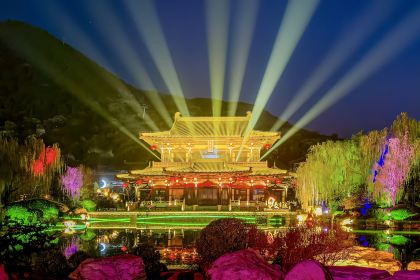
Baishui_County_Cangjie_Temple_Scenic_Area.
When planning your visit, it’s essential to set aside 1-2 hours to fully appreciate the intricate details and tranquil surroundings of the temple. The site is open daily from 8:00 AM to 5:00 PM, providing ample opportunity to explore its historical treasures. The serene ambiance, coupled with the rich tapestry of legends surrounding Cangjie, makes for an enriching day trip.
Getting There and Nearby Attractions
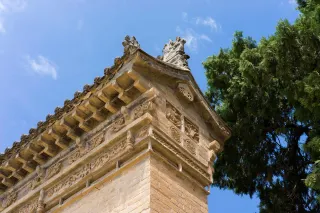
Baishui_County_Cangjie_Temple_Scenic_Area.
Cangjie Temple is easily accessible from various points in Baishui County. Once there, consider exploring nearby attractions such as the Cang Jie Tomb and the Yuanjun Temple-Quanhu Village Ruins, both of which further illustrate the area’s historical significance.
Whether you are a history enthusiast, a lover of nature, or simply in search of a peaceful retreat, the Baishui County Cangjie Temple Scenic Area promises an unforgettable experience steeped in the essence of ancient China. Make sure to bring your camera—it’s a place where every corner tells a story waiting to be captured!
The Rich History and Legends of Baishui County Cangjie Temple Scenic Area
A Journey Through Time: The History and Legends of Cangjie Temple
Nestled in the picturesque landscapes of Baishui County, the Cangjie Temple stands as a testament to the rich tapestry of Chinese history and culture. This venerable site is dedicated to Cangjie, the legendary figure credited with the invention of Chinese characters, making it a revered pilgrimage for scholars and history enthusiasts alike.
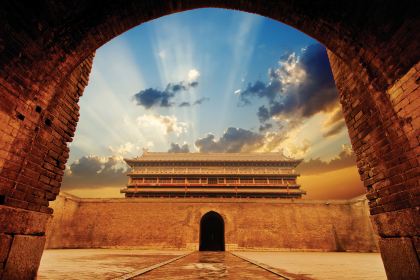
Baishui_County_Cangjie_Temple_Scenic_Area.
Historical Significance
Cangjie Temple is believed to have been established over 1,800 years ago, with its origins tracing back to the Eastern Han Dynasty (circa 162 AD). According to historical records, the temple was originally a grand structure, indicative of its importance during its early years. Though parts of the temple have undergone restoration due to damage over centuries, it still retains much of its original layout and architectural grandeur.
The temple complex is meticulously designed, oriented from north to south, and is enclosed by robust earth walls. The layout features a series of buildings aligned along a central axis, including the Zhaobi (the entrance wall), the mountain gate, the front hall, and the main hall, culminating in Cangjie’s tomb. Notably, the architectural style reflects the artistic trends of the Yuan, Ming, and Qing dynasties, showcasing elaborate decorations and a strong local character.

Baishui_County_Cangjie_Temple_Scenic_Area.
Legends and Lore
Cangjie is not just a historical figure; he is enshrined in various legends that highlight his profound impact on Chinese civilization. One such legend tells of his divine inspiration for creating characters from observing the footprints of animals, leading to the establishment of a written language that transformed communication in ancient China.
Another tale speaks of the “Terrorist Cypress,” a majestic ancient tree located by the mountain gate of the temple. Folklore suggests that a thief once attempted to infiltrate the sacred site but was thwarted by the cypress, which is said to have come to life, scaring him away. This story not only underscores the temple’s spiritual significance but also offers a glimpse into the local culture’s reverence for nature and the supernatural.
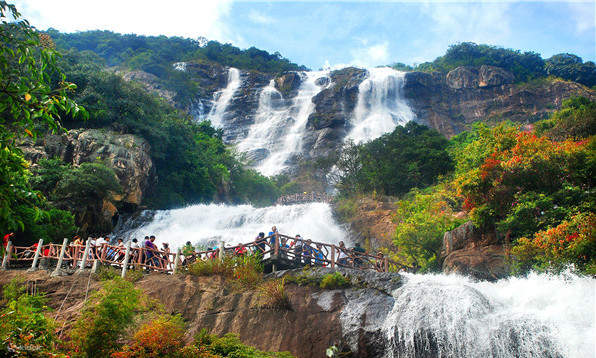
Baishui_County_Cangjie_Temple_Scenic_Area.
Treasures of the Temple
Within the temple grounds, visitors can find 48 ancient cypress trees, some over a thousand years old, which are considered among the oldest in China. These trees are not merely botanical wonders; they are steeped in cultural significance, each possessing its own unique characteristics and associated legends. For instance, trees like “Magpie Dengzhi” and “Dragon Claw Cypress” are celebrated for their intriguing shapes and the stories they tell.
Moreover, Cangjie Temple is home to 18 ancient steles, including the renowned “Cangjie Temple Stele,” which serves as a significant artifact in the history of Chinese calligraphy. These relics are a reminder of the temple’s long-standing role as a center of learning and cultural preservation.
A Cultural Pilgrimage
Visiting Cangjie Temple is not merely a trip to a historical site; it is an immersion into the heart of Chinese heritage. The serene environment, coupled with the ancient architecture, makes it a perfect spot for reflection and appreciation of the roots of Chinese writing and culture. As travelers walk among the towering cypress trees and contemplate the legends that have shaped this sacred space, they partake in a timeless narrative that continues to inspire generations.

Baishui_County_Cangjie_Temple_Scenic_Area.
In summary, the Cangjie Temple in Baishui County is a rich historical and cultural landmark that encapsulates the essence of Chinese civilization. Its legends, architectural beauty, and the wisdom it embodies invite all who visit to delve deeper into the story of Cangjie and the written word that connects us all.
Main Highlights: What You Absolutely Can’t Miss
Discover the Wonders of Cangjie Temple Scenic Area
Nestled in the picturesque Baishui County of Shaanxi province, the Cangjie Temple Scenic Area is a treasure trove of history and cultural significance. Dedicated to Cang Jie, the legendary figure credited with inventing Chinese characters, this site offers visitors a unique glimpse into ancient Chinese civilization. Here are the main highlights you simply cannot miss during your visit.
1. Cangjie Temple: A Historic Marvel
The centerpiece of the scenic area, Cangjie Temple boasts a rich history spanning over 1,800 years. Originally built during the Eastern Han Dynasty, the temple complex features a stunning layout that includes a series of beautifully crafted structures aligned along a central axis. Explore the Zhaobi (screen wall), the mountain gate, and the main halls that showcase exquisite architecture from the Yuan, Ming, and Qing dynasties.
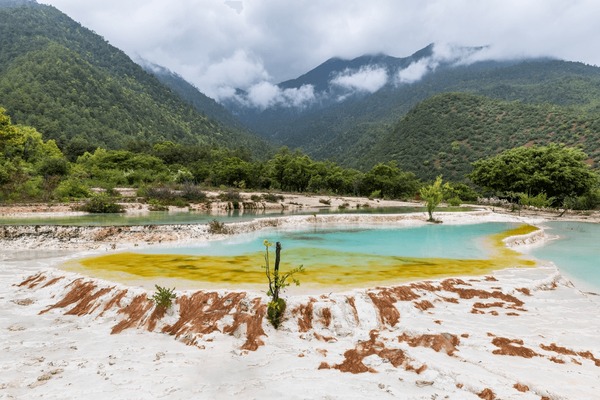
Baishui_County_Cangjie_Temple_Scenic_Area.
2. The Ancient Cypress Trees
As you wander the temple grounds, take a moment to appreciate the 48 ancient cypress trees that stand tall and proud. These trees, some over a thousand years old, are not only natural wonders but also steeped in local lore. Among them is the famous “Terrorist Cypress,” known for its legendary tale of thwarting a thief’s plans. Each tree has its own unique characteristics, making the garden a serene place of reflection and admiration.
3. Cang Jie Tomb: A Sacred Resting Place
Adjacent to the temple, the Cang Jie Tomb marks the final resting place of the man who shaped the foundations of Chinese writing. The tomb itself is a site of reverence, drawing scholars and visitors alike who wish to pay homage to this pivotal figure in Chinese history. The serene atmosphere surrounding the tomb enhances its significance, making it a must-visit.
4. Ancient Steles: A Glimpse into the Past
The temple complex houses 18 ancient steles, each telling a story of its own. The “Cangjie Temple Stele,” along with others like the “Guangwu General Stele,” are invaluable artifacts that highlight the evolution of Chinese calligraphy and culture. These steles serve as a testament to the artistic and literary achievements of ancient China.
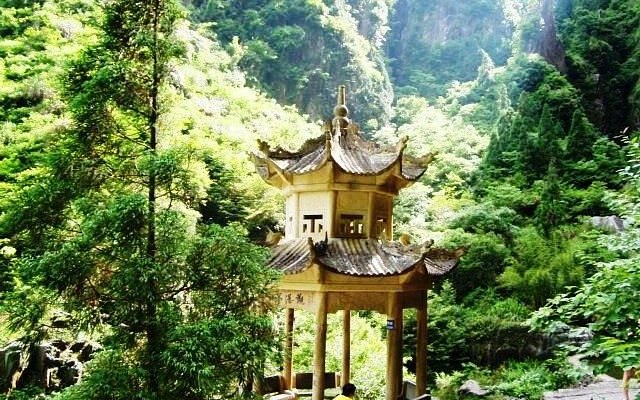
Baishui_County_Cangjie_Temple_Scenic_Area.
5. The Scenic Surroundings
The Cangjie Temple Scenic Area is not just about the temple itself; it is surrounded by breathtaking natural beauty. With Huanglong Mountain to the north and the Luohe River to the south, the views are simply stunning. Take time to explore the gardens, breathe in the fresh air, and immerse yourself in the tranquility of this sacred space.
6. Cultural Significance and Festivals
The temple is not only a historical site but also a living cultural hub. Throughout the year, various festivals and events are held to celebrate Cang Jie’s contributions to Chinese culture, offering visitors a chance to experience traditional ceremonies, performances, and local cuisine.

Baishui_County_Cangjie_Temple_Scenic_Area.
7. Visitor Information
- Opening Hours: Daily from 8:00 AM to 5:00 PM
- Recommended Visit Duration: 1-2 hours
- Location: Shiguan Country, Baishui County, Weinan, Shaanxi, China
The Cangjie Temple Scenic Area is more than just a destination; it’s a journey into the heart of Chinese history and culture. Whether you’re a history buff, a lover of nature, or simply looking to explore, this site promises an enriching experience that will leave you with lasting memories.
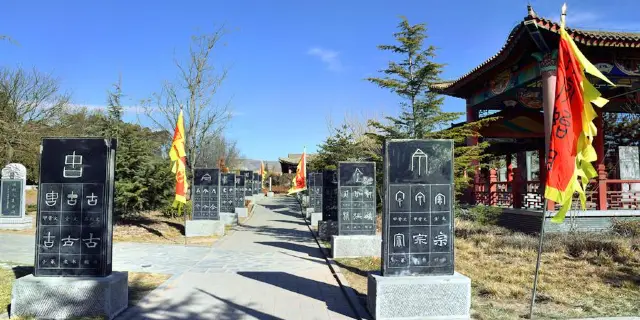
Baishui_County_Cangjie_Temple_Scenic_Area.
Planning Your Visit: A Practical Guide
Your Guide to Visiting Cangjie Temple Scenic Area
Nestled in the tranquil landscape of Baishui County, the Cangjie Temple Scenic Area offers a profound glimpse into Chinese history and culture. This ancient site is dedicated to Cangjie, the legendary figure credited with the invention of Chinese characters. As you plan your visit, here are essential details to ensure a memorable experience.
Getting There
- Location: Cangjie Temple is situated in Shiguan Town, Baishui County, Weinan City, Shaanxi Province.
- Transportation:
- By Car: The temple is accessible by car from major cities like Xi’an, approximately a two-hour drive away.
- Public Transport: Local buses operate from Weinan to Baishui County. Ensure to check schedules in advance, as they can be infrequent.
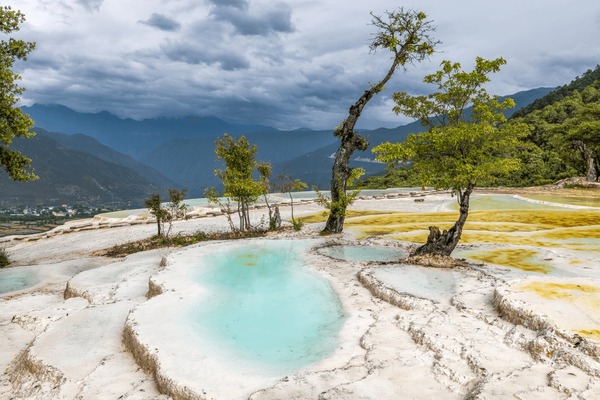
Baishui_County_Cangjie_Temple_Scenic_Area.
Opening Hours
Cangjie Temple welcomes visitors daily:
– Hours: 8:00 AM – 5:00 PM
– Best Time to Visit: Arriving early in the morning allows for a peaceful exploration of the temple grounds before crowds arrive.
What to Expect
- Historical Significance: The temple has a rich heritage, dating back over 1,800 years. It features various structures built during the Yuan, Ming, and Qing dynasties, showcasing traditional architectural styles.
- Main Attractions:
- Cangjie Tomb: The resting place of the revered ancestor of writing.
- Ancient Cypress Trees: The grounds boast 48 ancient cypresses, some over a thousand years old, with each tree bearing a unique name and story.
- Stele Collection: Marvel at ancient steles that document the history of the temple and its significance in Chinese culture.
Visitor Tips
- Recommended Duration: Plan for 1-2 hours to thoroughly explore the temple and its serene surroundings.
- Photography: The temple grounds and ancient trees provide stunning photo opportunities, especially in the early morning light.
- Local Etiquette: Please respect the sacred nature of the site. Avoid loud noises and be mindful of other visitors who may be there for reflection or prayer.
Nearby Attractions
Make the most of your trip by exploring other notable sites in Baishui County:
– Cangjie Tomb: Located just a short walk from the temple, this tomb is a must-see for history enthusiasts.
– Yuanjun Temple-Quanhu Village Ruins: Discover more about the ancient history of the region through these fascinating ruins.
Where to Eat and Stay
- Dining: Local eateries offer traditional Shaanxi dishes. Look for places that serve biangbiang noodles and roujiamo (Chinese hamburger) for an authentic experience.
- Accommodation: Options range from budget hotels to more comfortable stays in Baishui County. Booking in advance is advisable, especially during peak travel seasons.
Final Thoughts
Visiting the Cangjie Temple Scenic Area is more than just a sightseeing trip; it’s an opportunity to connect with the ancient roots of Chinese culture and the evolution of its writing system. Whether you are a history buff or simply seeking a serene escape, this site promises to enrich your understanding of China’s profound heritage. Enjoy your visit!
Tickets: Prices, Booking, and Tips
Visiting Cangjie Temple: Ticket Information, Booking, and Tips
Cangjie Temple, located in Baishui County, Shaanxi Province, is a significant cultural heritage site dedicated to Cangjie, the legendary figure credited with inventing Chinese characters. This ancient temple not only offers a glimpse into China’s literary history but also features a serene environment adorned with age-old cypress trees and historical relics.
Ticket Prices
- General Admission: Approximately RMB 30 (about $4.50 USD)
- Discounted Tickets: Available for students and seniors, typically around RMB 15 (about $2.25 USD)
Note: Prices may vary, so it’s advisable to check local listings or inquire directly for the most current rates.
Opening Hours
Cangjie Temple welcomes visitors daily from 8:00 AM to 5:00 PM. It’s recommended to plan your visit within these hours to fully explore the temple’s offerings.
Booking Tickets
Tickets for Cangjie Temple can be purchased at the entrance; however, to avoid long queues, consider the following options:
- Online Reservations: Websites like Trip.com often provide the opportunity to book tickets in advance. This can save you time and ensure entry, especially during peak tourist seasons.
- On-Site Purchase: If you prefer spontaneity, tickets can also be bought directly at the temple entrance.
Travel Tips
- Best Time to Visit: Aim for spring (March to May) or autumn (September to November) when the weather is mild and the garden is in full bloom.
- Recommended Duration: Plan to spend 1-2 hours exploring the temple and its surrounding gardens. The tranquility of the ancient cypress trees and the historical significance of the site warrant a leisurely visit.
- Photography: The temple’s architecture and natural surroundings provide excellent opportunities for photography. Be sure to capture the intricate details of the ancient trees and the serene ambiance.
- Nearby Attractions: Consider visiting the Cangjie Tomb and the Yuanjun Temple ruins, both located in close proximity to the temple, to enrich your cultural journey.
- Dress Code: While there is no strict dress code, it’s advisable to wear comfortable shoes, as the temple grounds can involve some walking.
Getting There
Cangjie Temple is situated in Shiguan Town, Baishui County, Weinan City. Public transportation options, including buses and taxis, are available from major cities like Xi’an. If you’re driving, ample parking facilities are typically available nearby.
Visiting Cangjie Temple not only offers a step back into the rich tapestry of Chinese history but also serves as a tranquil escape into nature. Whether you’re a history enthusiast or simply looking for a peaceful spot, this temple is a must-visit on your journey through China.
How to Get There: A Complete Transportation Guide
Navigating Your Journey to Cangjie Temple Scenic Area
Visiting the Cangjie Temple Scenic Area in Baishui County offers travelers a unique glimpse into China’s rich historical tapestry, as it is dedicated to Cang Jie, the revered figure credited with the invention of Chinese characters. Whether you’re coming from nearby cities or traveling from afar, this guide will help you navigate your journey to this captivating site.
By Air
Xianyang International Airport (XIY) is the closest major airport to Baishui County, located approximately 90 kilometers (56 miles) away. Here’s how to reach the temple from the airport:
- Airport Shuttle: Look for shuttle services that connect the airport to Weinan City. From Weinan, you can take local transport to Baishui County.
- Taxi or Ride-Hailing Apps: Taxis are available outside the airport, and ride-hailing apps like Didi can be used for a more comfortable journey directly to the temple.
By Train
For those already in China, traveling by train can be a scenic and efficient option.
- To Weinan Railway Station:
- Take a high-speed train from major cities like Xi’an, Zhengzhou, or Chengdu to Weinan. The journey from Xi’an takes about 30-40 minutes.
- Transfer to Baishui County:
- From Weinan Railway Station, you can take a taxi (approximately 40 minutes) or use local buses that connect to Baishui County.
By Bus
Buses provide a budget-friendly option for reaching Baishui County.
- From Xi’an:
- Frequent buses depart from Xi’an’s main bus station to Baishui County. The journey takes about 1.5 to 2 hours.
- Local Transportation:
- Once in Baishui County, take a local taxi or bus to the Cangjie Temple. Be sure to check the schedule, as services may be limited, especially on weekends.
By Car
For those who prefer the freedom of driving, renting a car is a great option.
- From Xi’an:
- The drive from Xi’an to Cangjie Temple takes about 1.5 hours via the G70 highway. Following signs for Weinan and then Baishui County will guide you to your destination.
- Parking:
- There are parking facilities available at the temple, making it convenient for visitors traveling by car.
Local Transportation Tips
- Public Transport: Local buses operate within Baishui County, but schedules may vary. It’s advisable to check in advance or ask locals for the latest routes.
- Taxis and Ride-Hailing: Taxis are a reliable mode of transport in the area. Using ride-hailing apps can also provide a more comfortable experience, especially for non-Chinese speakers.
Visiting the Temple
Once you arrive at the Cangjie Temple Scenic Area, you can expect a serene environment filled with ancient architecture and towering cypress trees. The temple is open daily from 8:00 AM to 5:00 PM, making it an excellent destination for both morning and afternoon visits. Consider spending 1-2 hours to fully appreciate the site’s historical significance and beauty.
Conclusion
Reaching the Cangjie Temple Scenic Area is a journey worth undertaking for anyone interested in Chinese culture and history. With various transport options available, you can easily plan your trip to explore this ancient site, steeped in the legacy of one of China’s greatest cultural figures. Happy travels!
Local Cuisine and Accommodation Nearby
Exploring Baishui County and the Cangjie Temple Scenic Area offers not only a glimpse into the rich tapestry of Chinese history but also a delightful array of local cuisine and comfortable accommodations.
Culinary Delights
When visiting the Cangjie Temple, take the opportunity to indulge in some of the region’s culinary specialties. Here are a few must-try dishes and dining spots:
-
Shaanxi Noodles (油泼面): A signature dish of the region, these hand-pulled noodles are typically served with a spicy oil sauce and fresh vegetables. Look for local eateries in Baishui County that serve this delightful dish.
-
Roujiamo (肉夹馍): Often referred to as a Chinese hamburger, this street food staple consists of shredded meat (usually pork) stuffed inside a fluffy bun. It’s a satisfying and portable snack for your temple visit.
-
Dumplings (饺子): A quintessential Chinese dish, dumplings come in various fillings and are best enjoyed at local family-run restaurants. The dumplings in this area are known for their robust flavors and fresh ingredients.
-
Baishui Grilled Fish: Freshwater fish from local rivers are expertly grilled and seasoned, making for a flavorful and healthy meal. Look for restaurants specializing in grilled dishes for an authentic taste of the region.
Local Restaurants
-
Baishui Local Cuisine Restaurant
A family-friendly spot renowned for its handmade noodles and dumplings. The warm atmosphere makes it a perfect place to relax after a day of exploring. -
Cangjie Food Stall
A small yet popular stall near the temple offering quick bites like Roujiamo and flavorful stir-fried dishes. Perfect for a casual lunch or snack. -
Shaanxi Flavor Restaurant
This eatery specializes in traditional Shaanxi cuisine, from spicy noodles to rich, hearty soups, allowing you to experience the depth of local flavors.
Accommodation Options
After a day of immersing yourself in the history and culture of Cangjie Temple, you’ll want a comfortable place to rest. Here are some nearby accommodations that cater to various budgets:
-
Baishui County Hotel
A well-rated hotel offering comfortable rooms and essential amenities. It’s conveniently located near local attractions, making it ideal for tourists. -
Charming Guesthouse
This cozy guesthouse provides a homely atmosphere with traditional decor. Enjoy a warm welcome from the hosts and a complimentary breakfast featuring local specialties. -
Budget Inn Baishui
For travelers on a budget, this inn offers clean and simple rooms at an affordable price. It’s a great base for exploring the area without breaking the bank.
Final Thoughts
Baishui County and the Cangjie Temple Scenic Area are not just about historical exploration; they also provide a rich culinary journey and comfortable lodgings, making your visit a well-rounded experience. Be sure to relish the local flavors and enjoy the hospitality of the region as you delve into the legacy of Cangjie, the revered ancestor of Chinese writing.
Frequently Asked Questions
Frequently Asked Questions about Cangjie Temple Scenic Area
1. What is the historical significance of Cangjie Temple?
Cangjie Temple is dedicated to Cangjie, the legendary creator of Chinese characters. The temple has over 1,800 years of history, dating back to the Eastern Han Dynasty. It serves as a vital cultural site that commemorates the development of Chinese writing and language.
2. Where is Cangjie Temple located?
Cangjie Temple is situated in Shiguan Town, Baishui County, within Weinan City, Shaanxi Province, China. The scenic area offers beautiful views, with Huanglong Mountain to the north and the Luohe River to the south.
3. What are the opening hours for the temple?
The temple is open daily from 8:00 AM to 5:00 PM. It’s advisable to check in advance if you plan to visit during public holidays, as hours may vary.
4. How much time should I allocate for a visit?
A visit to Cangjie Temple typically takes 1 to 2 hours. This allows time to explore the temple grounds, view the ancient cypress trees, and appreciate the historical architecture.
5. Are there any notable features to look out for at the temple?
Yes! The temple grounds are home to 48 ancient cypress trees, many of which are over a thousand years old. Additionally, the temple boasts stunning architecture from various dynasties, including the Yuan, Ming, and Qing. Noteworthy features include the Zhaobi, the front hall, and various ancient steles inscribed with historical texts.
6. Is there an entrance fee for visitors?
While specific ticket prices may vary, it’s best to check local listings or the temple’s official website for the most current information regarding entrance fees.
7. What are some nearby attractions in Baishui County?
In addition to Cangjie Temple, you can visit the Cangjie Tomb, where Cangjie is believed to be buried, and the Yuanjun Temple-Quanhu Village Ruins. These sites add depth to your understanding of the region’s rich historical tapestry.
8. What is the best way to reach Cangjie Temple?
The most convenient access is typically by car or taxi from nearby cities like Weinan. Public transport options may also be available, but check local schedules for bus routes that service Baishui County. If you are driving, ensure you have a navigation app to guide you through the scenic routes.
Final Thoughts on Your Trip
As your journey through Baishui County comes to a close, the Cangjie Temple Scenic Area stands as a testament to China’s rich historical tapestry and cultural heritage. This enchanting site, dedicated to Cangjie—the legendary figure credited with the invention of Chinese characters—offers a unique opportunity to connect with the profound legacy of writing and communication that has shaped Chinese civilization for millennia.
Unforgettable Experiences Await
Visiting Cangjie Temple is more than just a trip to see ancient relics; it’s an immersion into the heart of Chinese history. Here are some highlights to remember:
-
Historical Significance: With its origins dating back over 1,800 years, the temple complex not only commemorates Cangjie but also showcases exquisite architectural styles from various dynasties, including the Yuan, Ming, and Qing.
-
Natural Beauty: The temple’s serene gardens, populated with ancient cypress trees, provide a tranquil setting for reflection. These towering giants, some over a thousand years old, add to the temple’s charm and are a marvel of nature.
-
Cultural Insights: As you wander through the temple grounds, take a moment to appreciate the inscriptions and steles that tell stories of the past. Each stone holds a fragment of history, inviting you to ponder the evolution of Chinese writing and its impact on culture.
Final Reflections
Your visit to the Cangjie Temple Scenic Area is not merely about sightseeing; it is a journey into the essence of Chinese identity—its language, its artistry, and its enduring traditions. As you depart, carry with you the stories of Cangjie and the wisdom embedded in the very characters that form the backbone of one of the world’s oldest continuous cultures.
In closing, let the beauty and tranquility of Baishui County linger in your memories, inspiring you to explore further and delve deeper into the rich tapestry of Chinese history and culture on your future travels. Safe travels, and may your adventures continue to ignite your curiosity about the world!